Condition and Restoration
The restoration of a badly damaged painting, particularly one by a supreme artist, can never be satisfactory. To paraphrase F. Scott Fitzgerald, 40 who was acutely aware of the contradictory nature of creative endeavor, if one possesses intelligence and humility, essential traits of any decent restorer, you always hold in balance the sense of the futility of your efforts and the necessity and determination to succeed as best you can to render the image legible while trying not to pollute the traces of the great mind that produced it. One is required to juxtapose with the original whatever feeble imitation can be mustered. It is an impossible task and failure is inevitable.
In This is Not Just a Painting, Bernard Lahire, writing about the convoluted authentication of a Poussin, describes how the transformation of an ordinary picture, which once hung on the wall in an ordinary house as a copy, into a treasure captures the public imagination like the fairy tale in which a frog turns into a Prince. 41 The painting becomes a magical object, not unlike the relic in medieval times, and its discovery a public event, which inevitably gives rise to a multitude of issues: dominance and the establishment of hierarchies among experts, “the connoisseur as demiurge,” in the words of Michel Laclotte; national pride; the price of art and the transparency, or lack thereof, of the art market; legal quagmires; even politics and conspiracy theories; and, not least of all, the critical act of restoration. In the case of the Salvator Mundi, all these elements have captivated the media.
Condition
As described, at some point a flaw in the panel and restriction of the natural expansion and contraction of the wood across the grain caused a severe check to develop.
In
consequence, a series of events associated with heavy-handed attempts to
correct the alignment of the two halves of the painting resulted in severe
damage to the curls on the proper right side of the head and adjoining passages
of the flesh tones of the cheek. Other losses, probably associated with worm
tunneling, are present in the forehead, the end of the nose, and passages of
the proper left eye and cheek. These losses are clearly visible in the infrared
scan. The eyes, particularly the proper right eye, are abraded. The area of the
chin, neck and breast were harshly cleaned with strong solvents resulting in
abrasion of the original paint layers. The thinly painted upper part of the
orb, the upper area of the palm, and the fingers have also suffered from
abrasion due to harsh cleaning. Much of the original background was scraped
off, including the upper part of the hair. The knot itself, which
coincides with the center of the stole with the cabochon jewels, fragmented into five pieces of wood. These were reattached to the two main sections of the panel but little of the original design survived; the knotwork
pattern in this area is largely later repaint. Areas of old repaint here and elsewhere are mapped on the diagram.

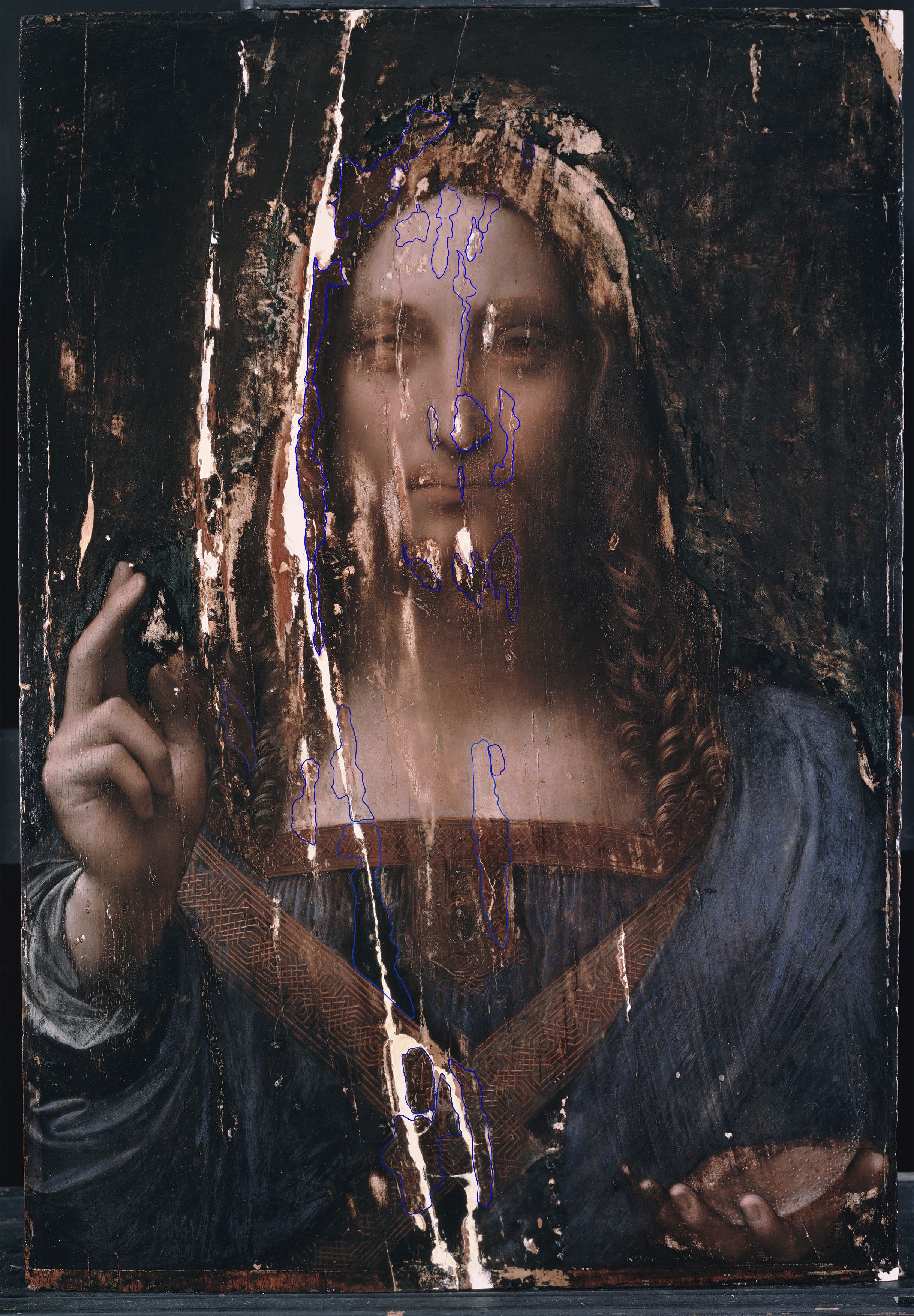
Cleaning
When I received the painting in April 2005, the Cook repainting along with most of whatever older varnish was present had already been removed. There was a relatively recent varnish, sticky and uneven, and some crude touch ups, which may have been done by the owner or a local amateur. The more recent resins and paints came off very easily with an acetone/mineral spirits mixture, while remnants of some of the older retouches were removed with acetone, heptane, and a touch of ammonia. Some of the damages had been carefully retouched with a medium that had become hard and translucent, perhaps predating the late 19thcentury Cook restoration, and I retained these because their enamel-like surface was a useful base for further reintegration of the losses. Although the color no longer matched the original, it could be easily adjusted and did not appear to cover original paint. Despite the many damages due to scraping, worm tunneling, and abrasion, some passages of the face, especially the proper right check, parts of the forehead and the nose were well-preserved and retained all the modelling layers. As seen in greenish fluorescence of the ultraviolet image, there are remains of an older varnish over much of the blessing hand, with the exception of the thumb, the on the proper left side of the head, the drapery passages and much of the orb. This layer was thin and not discolored. It was not an original coating because it is over areas, such as the orb, which had been overcleaned in the past. There was no reason to remove this varnish and I left it. After cleaning, a large sloping fill in the area of the check composed of a traditional gilder’s whiting and animal glue mixture was exposed. This putty was relatively modern and could be softened easily with saliva and removed mechanically. Although a bit of original paint was recovered, when this filling material was removed the check in the panel was visible and the nature of and reason for the worst damages became clear. There was still a considerable step between the two sides of the check which had been somewhat disguised by the generous fill.
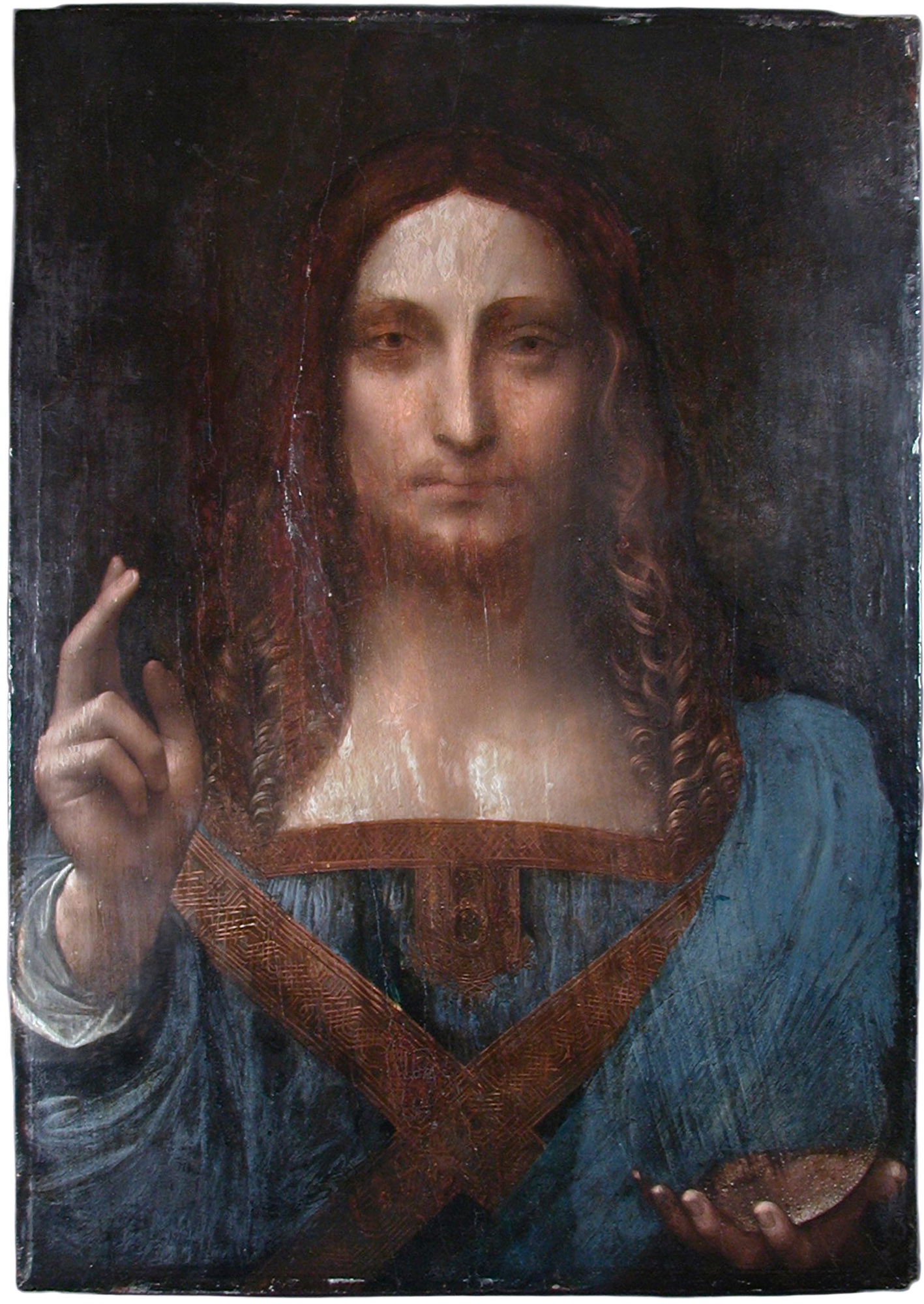
Panel Restoration
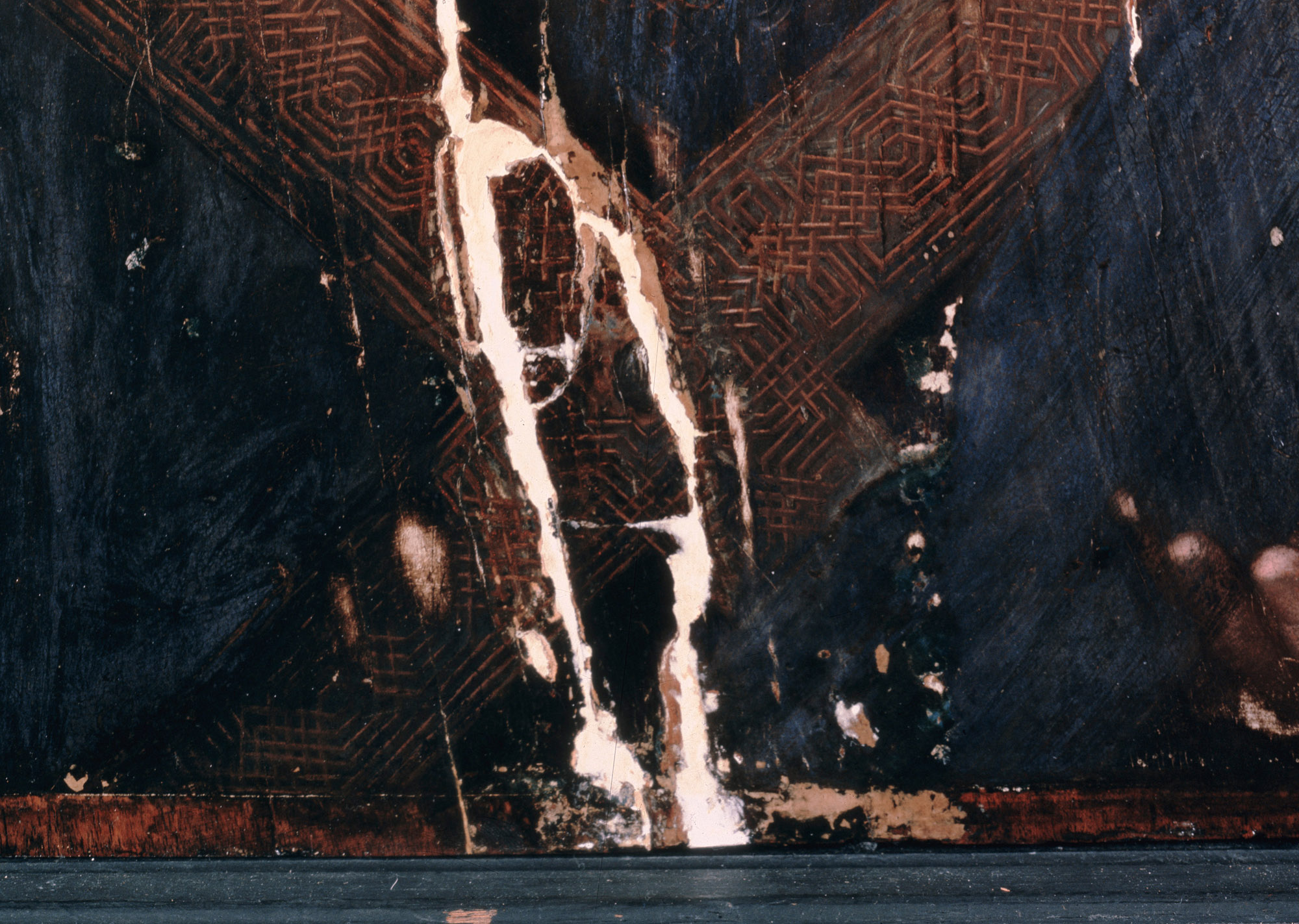
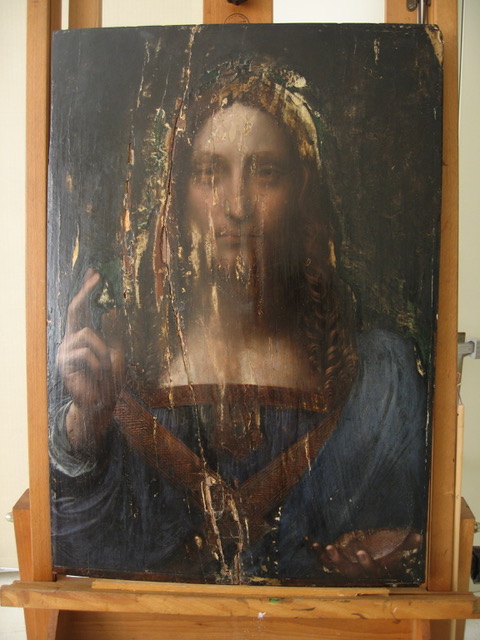
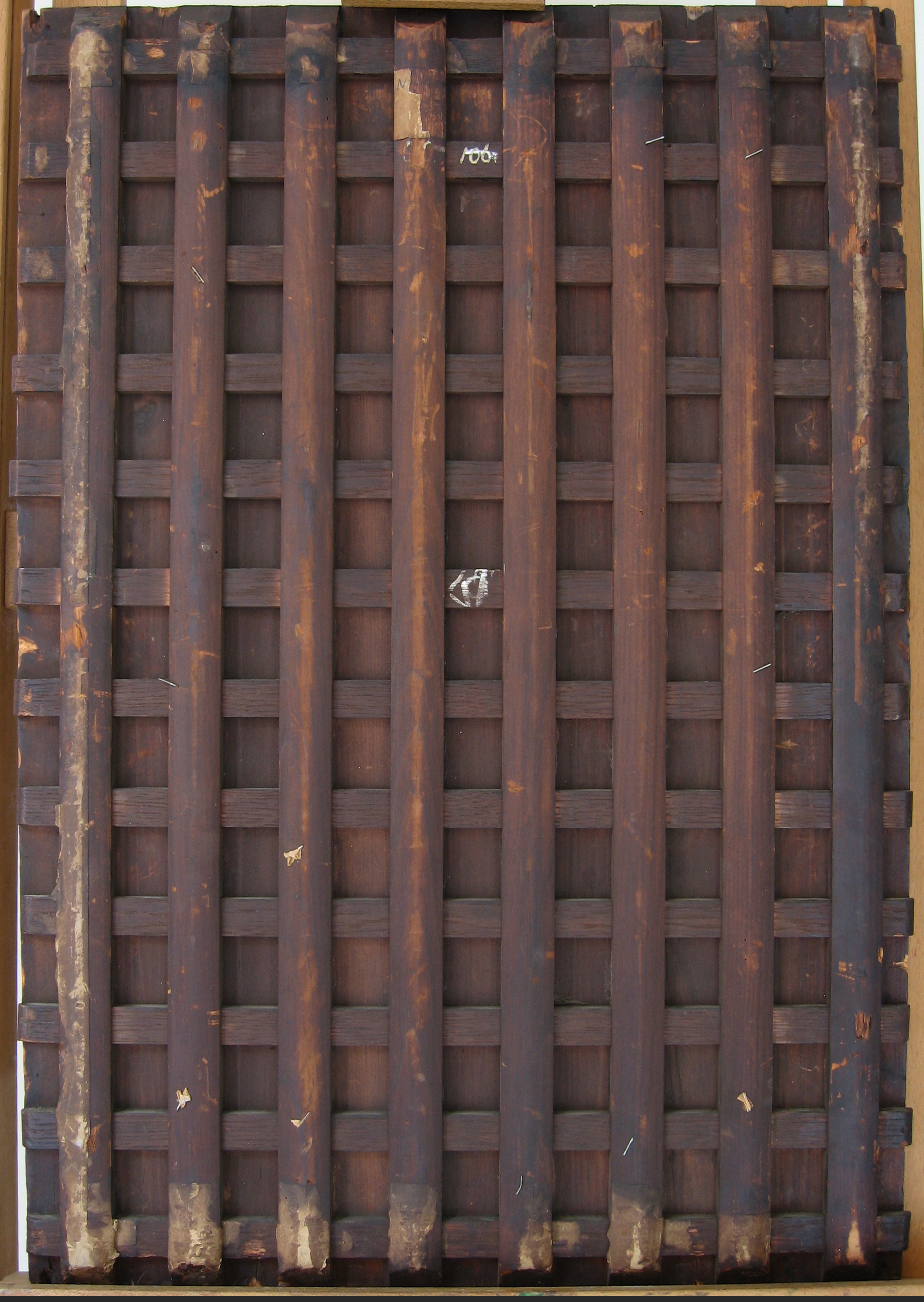

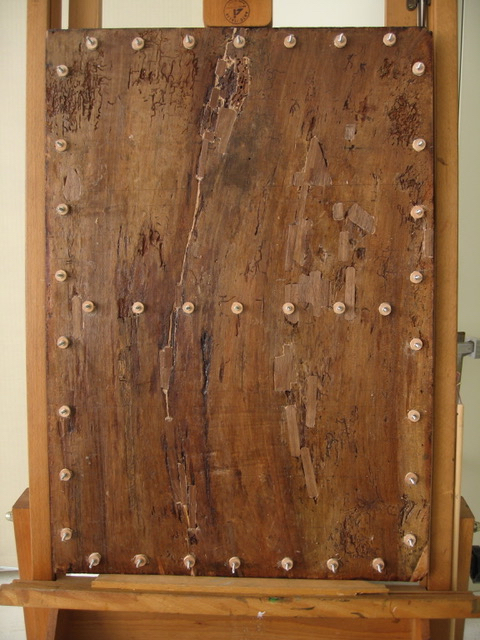
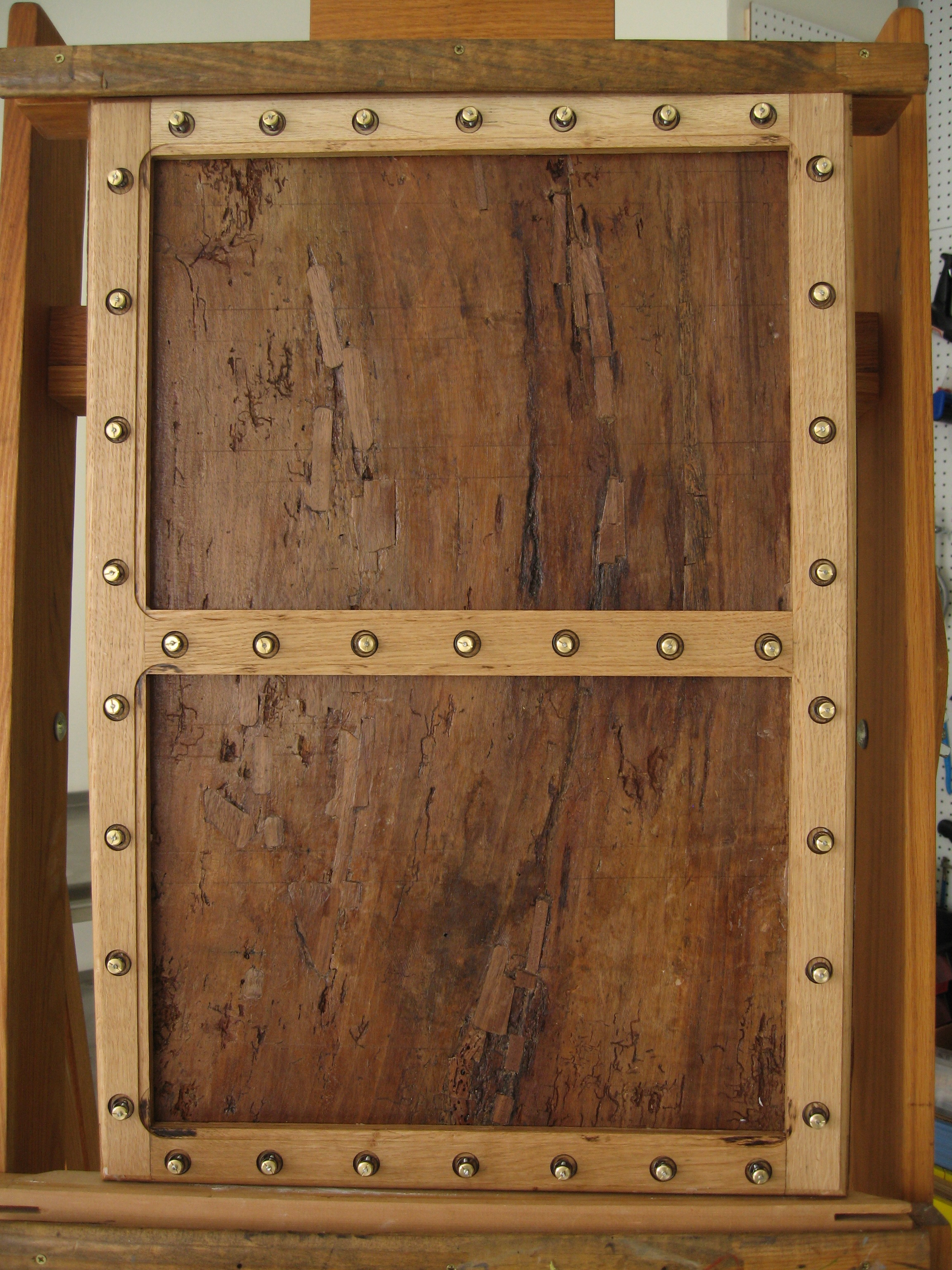
Restoration of the Support
After cleaning, the panel was restored by Monica Griesbach between December 2005 and September 2006. Ms. Griesbach’s treatment report:Condition:
The panel was in generally poor condition, mostly as a result of unfortunate restoration treatments in its past. Because the panel had been laminated to a board, the extent of the damage of the original support was initially unclear. The original panel must have been thinned significantly as the overall combined thickness of the secondary pine board plus the original panel was only approximately 7mm. By studying the painting’s surface, the following damages were recorded: the original panel had numerous fractures that ran along the curvature of the wood grain. It was unclear if the splits resulted from the thinning of the panel however they were already there when the panel was marouflaged. No attention had been paid to aligning the pieces correctly when the pieces were glued to the board.
The uneven level was most notable along the longest split that traverses the entire length of the panel in a long curve and where large fills had been applied to compensate for the uneven surface. Along this split, in the area surrounding the proper right side of the figure’s head, the wood support was visible where the paint layers had been unfortunately planed down from the front in order to align the two sides of the panel. Along another split in the upper left quadrant there was a second area that was also planed down on one side from the front. Fortunately, this split is in a background area of the image. Further down along the central split, near the lower edge, there was an area of complex multiple fractures associated with a large knot.
The proper right corner was missing in a area approximately 3 cm in length and 5 cm in heightreconstruct. This was reconstructed with a fill.
The overall level was flat with no warping. Most members of the cradle were fairly moveable suggesting that none of the cracks were caused by stress due to locking of the cradle cross members. Although the largest fills had been removed during the recent cleaning, there was still remaining material inside the splits
Treatment:
Areas of lifting paint were consolidated with isinglass glue. A protective layer of varnish (Laropal K80) was applied to the surface.
Several of the remaining fills where removed where it was determined necessary for proper re-alignment of the panel surface.
The cradle and auxiliary panel were removed mechanically with hand tools in slow stages, revealing a badly damaged and worm-eaten panel made of a single board of walnut.
Some small repairs were made as the panel was freed from the marouflage. Once the removal was complete, the panel separated into seven pieces: two large pieces on either side of the check and five small fragments just above the lower edge at the center. The sizes ranged from a 3mm wide sliver to one measuring approximately 5 cm in length. The smaller pieces were in a very damaged state, with uneven edges and deformed surfaces.
The fragments were were slowly assembled into one piece. Methods of repair included re-gluing of splits as well as the insertion of hand fitted wedges and blocks of a like-kind wood (old salvaged walnut dating from the 16th century). Adhesives used for the repair of splits and breaks were fish glue, araldite 1253 structural adhesive, and Epotech Epoxy. Once the painting was whole, with the release of the stress caused by the cradle and the marouflage, the painting acquired a more natural overall curvature.
The back of the painting was coated with B-72 acrylic resin to mitigate movement of the panel due to changes in humidity.
A secondary support system was designed as follows:
After monitoring the movement of the panel in slight changes of relative humidity, it was observed that the painting presented only limited movement. Also, although the panel was considerably damaged, it is strong and can hold its own weight without much support.
An Italian support system developed at the Opificio delle Pietre Dure in Florence was chosen.With this system, the panel is held against a custom built solid German oak strainer that is shaped to match the curvature of the panel. The panel is attached to the strainer by 37 custom sized spring mechanisms.
The system permits the panel to safely flex in response to slight variations in temperature and humidity while providing a solid support that allows the painting to be safely handled. In choosing this system, consideration was given to the fact that the painting is not in a frame and is likely to travel quite a bit and will be handled often. Access to the painting’s recto and verso is also essential as the painting will be closely studied.
An advantage to this type of support is that the painting can be safely handled without a frame. The downside however is that the range of flexibility is limited by the established curvature of the strainer and the limits of the spring system. The system was chosen as the benefits outweighed the risks.
When the painting has a permanent frame and is kept in a consistently stable environment in which the handling will be limited, consideration might be given to substituting the curved strainer with a more flexible support system as this would be appropriate if the painting is in a framed and secure environment (usually these systems, such as that developed by Ray Marchant rely on the framing elements to provide the safe handling of the painting.)
Date of treatment completion: September 5, 2006
Note: The secondary support proved to be excessively restrictive and was removed in November 2011 by George Bisacca and Alan Miller. It was replaced with layers of Featherboard and the package was isolated behind glass in a Marvelseal enclosure.
Retouching
After the repairs to the panel had been completed, the restoration was undertaken. A brush coat of Talens Rembrandt Retouching Varnish (15% polycyclohexanone in white spirit) was applied. Some losses were filled with putty composed of 12%
rabbit skin glue, calcium sulphate and china clay. The losses in the head were underpainted with a light red color similar to the first layer of underpaint using dry pigments bound with poly vinyl acetate in alcohol (Mowilith 20). These were
subsequently built up with scumbles and glazes, primarily using the same medium but also with watercolor, until the retouches matched the surrounding original paint. The modelling layers of the original paint were intact and it was therefore
possible to reestablish the form where it was missing by carefully modulating the transitions within the areas of loss. The minute craquelure patterns were also retouched because they created anomalous shapes, which did not correspond to features in the
composition but rather to parts of the structure of the grain of the wood. (See Materials and Techniques for a more detailed discussion of the craquelure.)



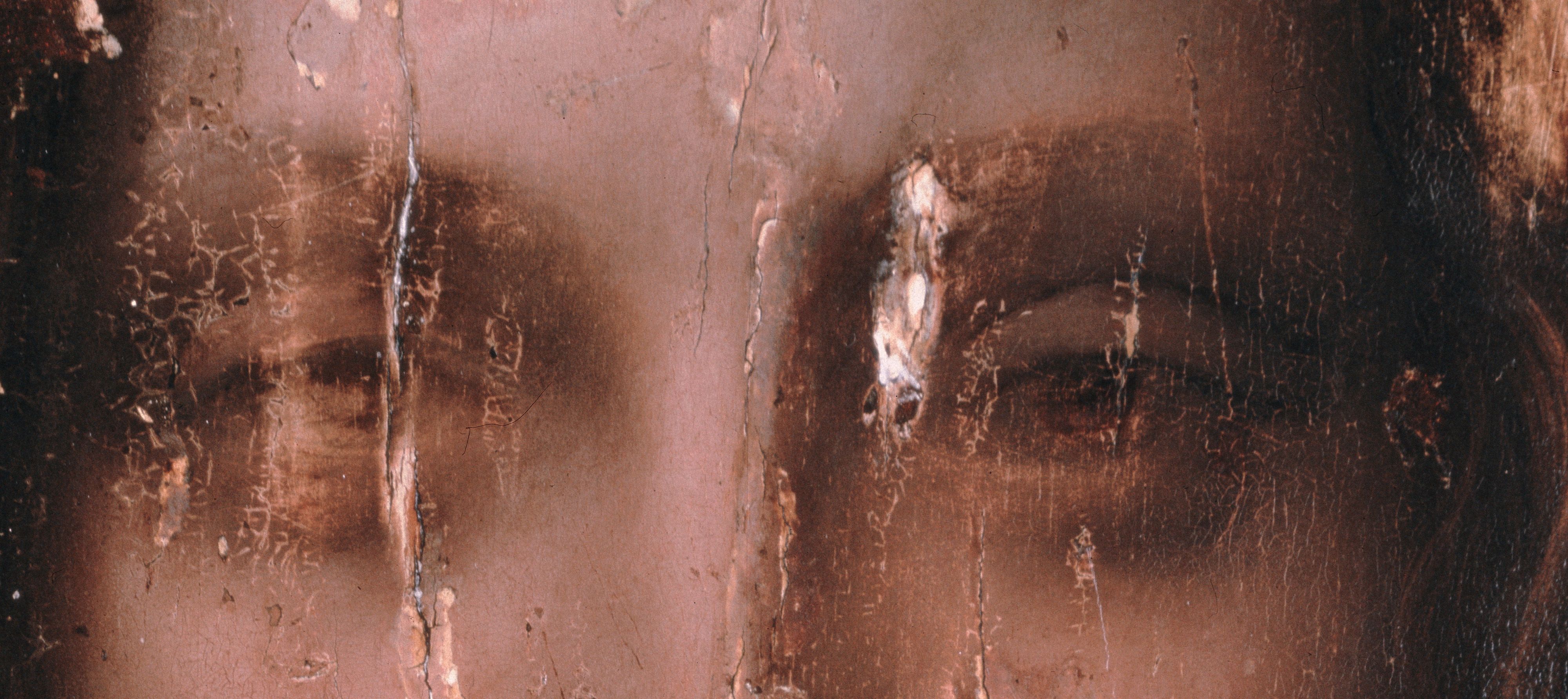
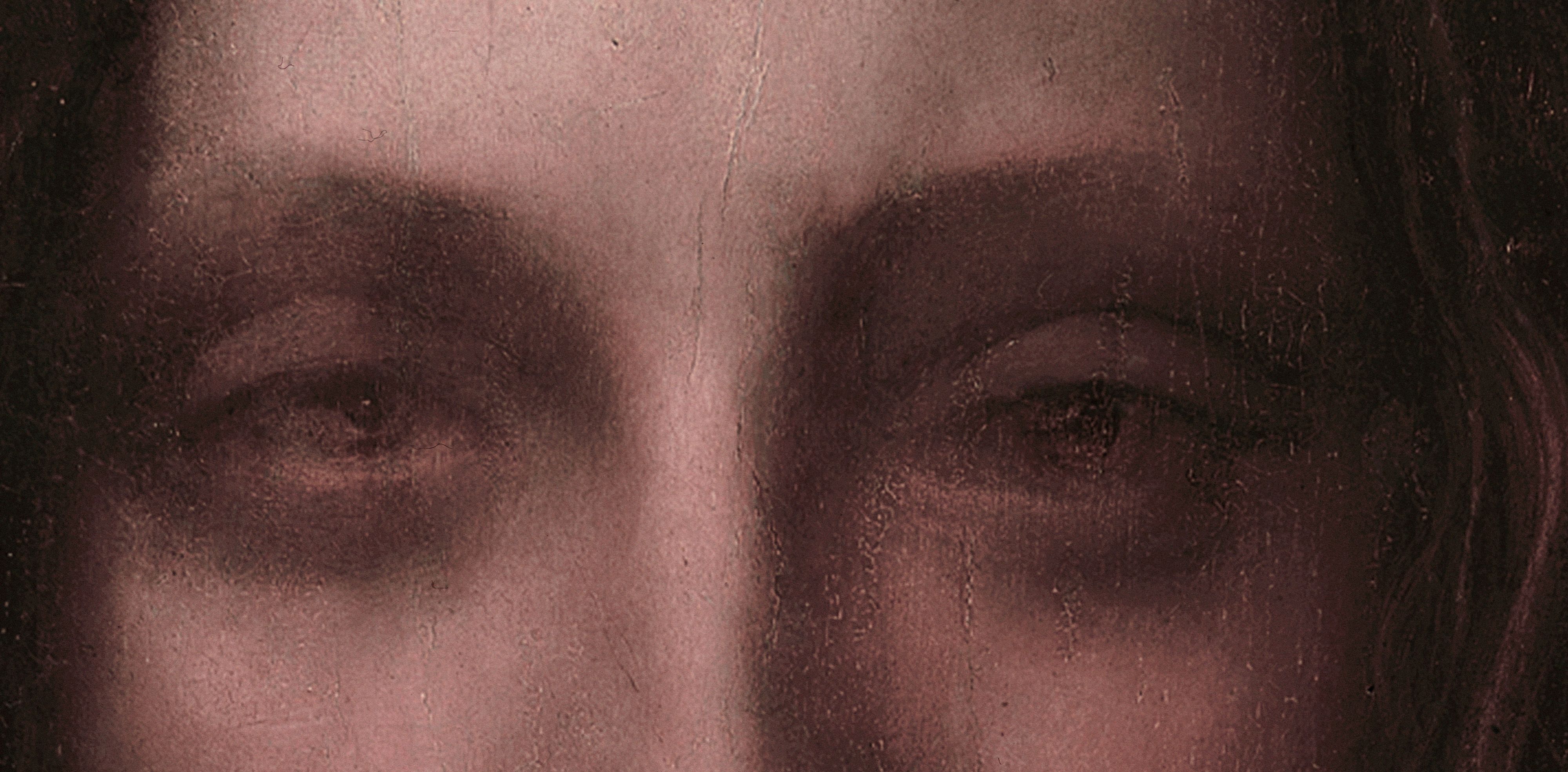
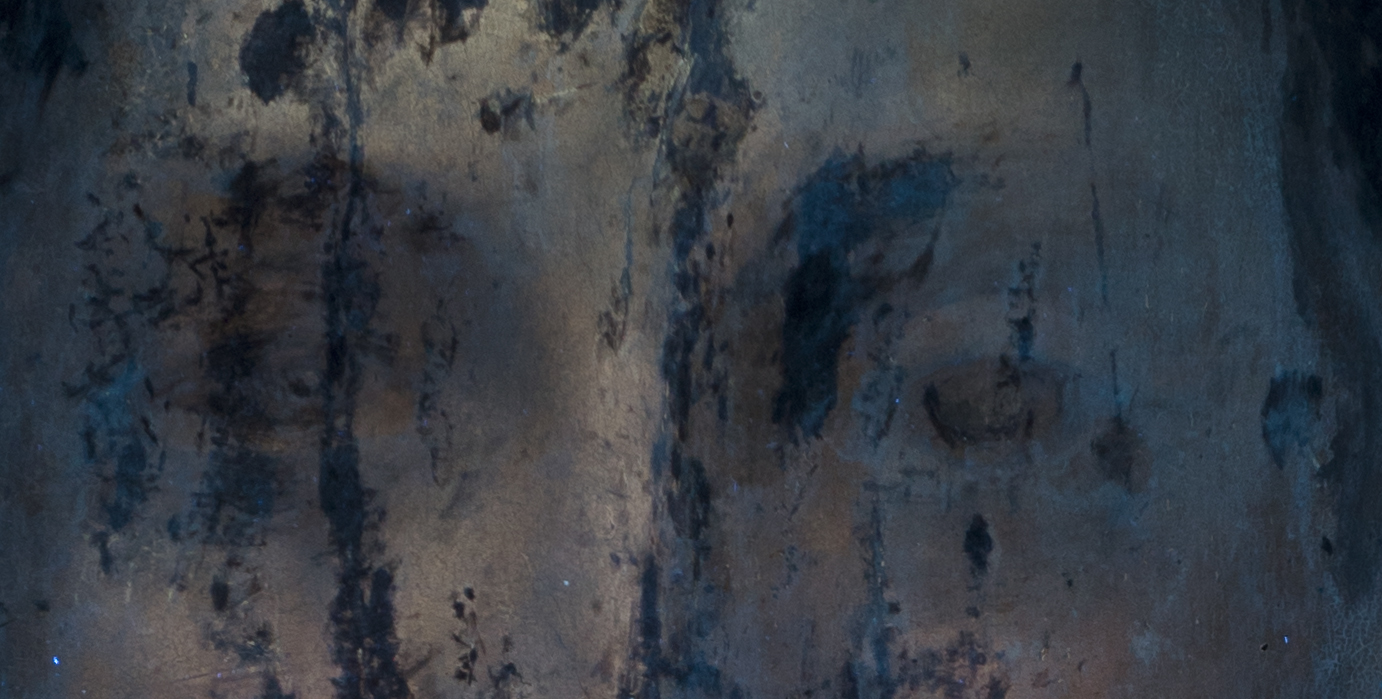

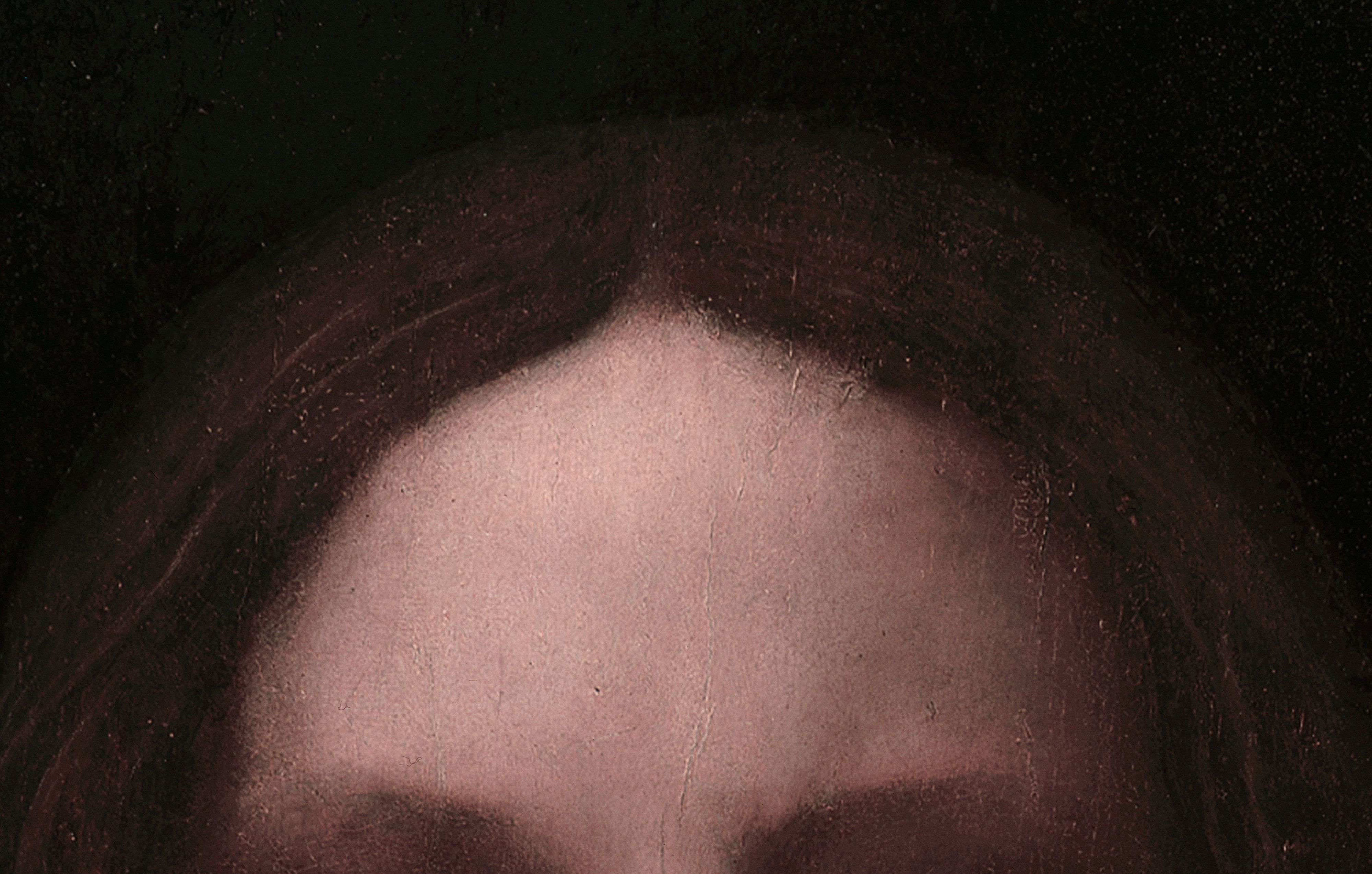
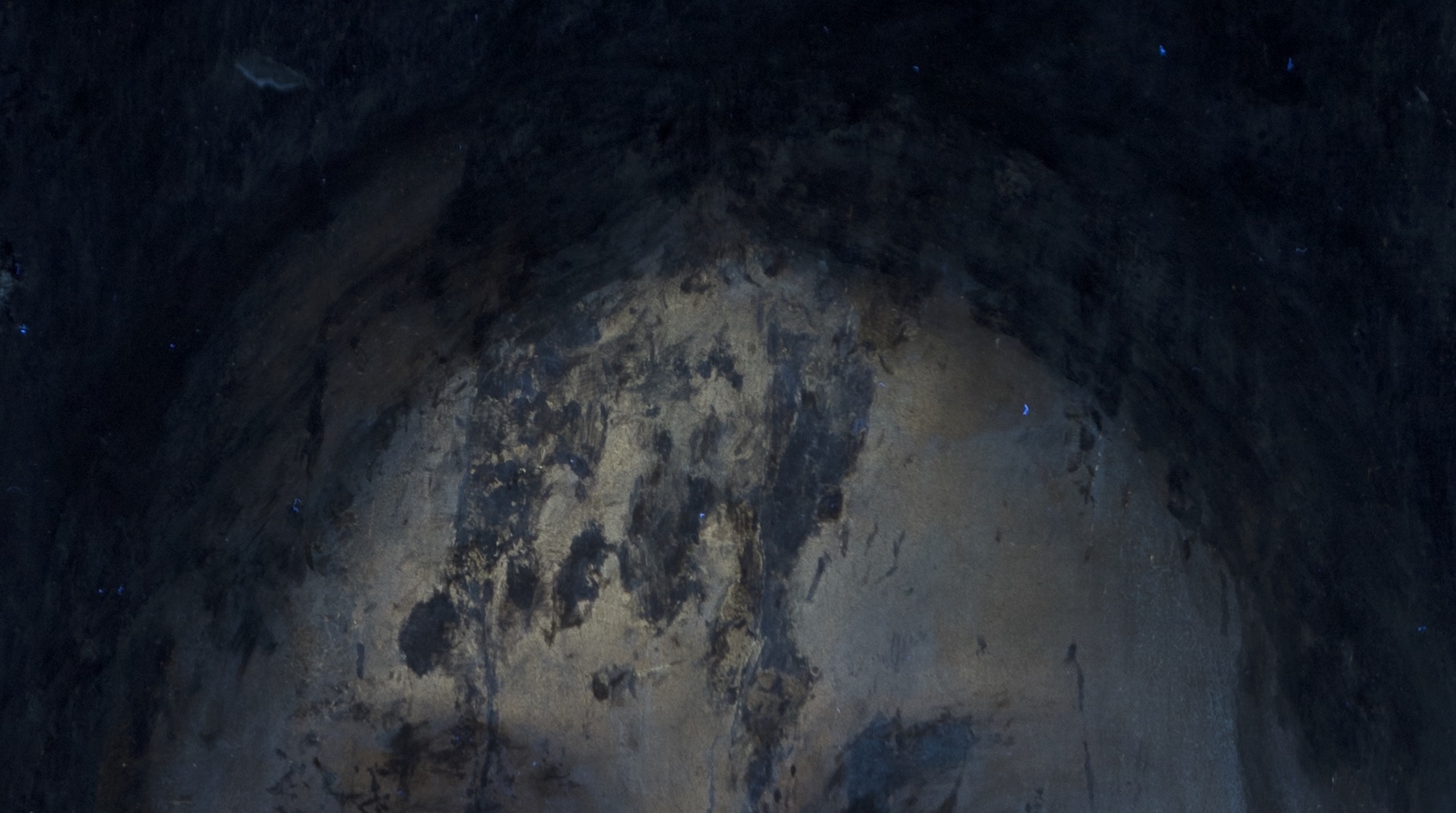
The hair on the top of the head had been almost entirely scraped away with only a few islands of extant original and some remants of older repaint, which had themselves been largely scraped off. The most substantial patch of old repaint went beyond the boundaries of the original contour of the head, which could be inferred from the remnants of original black background that persisted here and there along its border and a still visible original incision of the contour that pentrated through the preparation. I used this incision to establish the shape of the head.

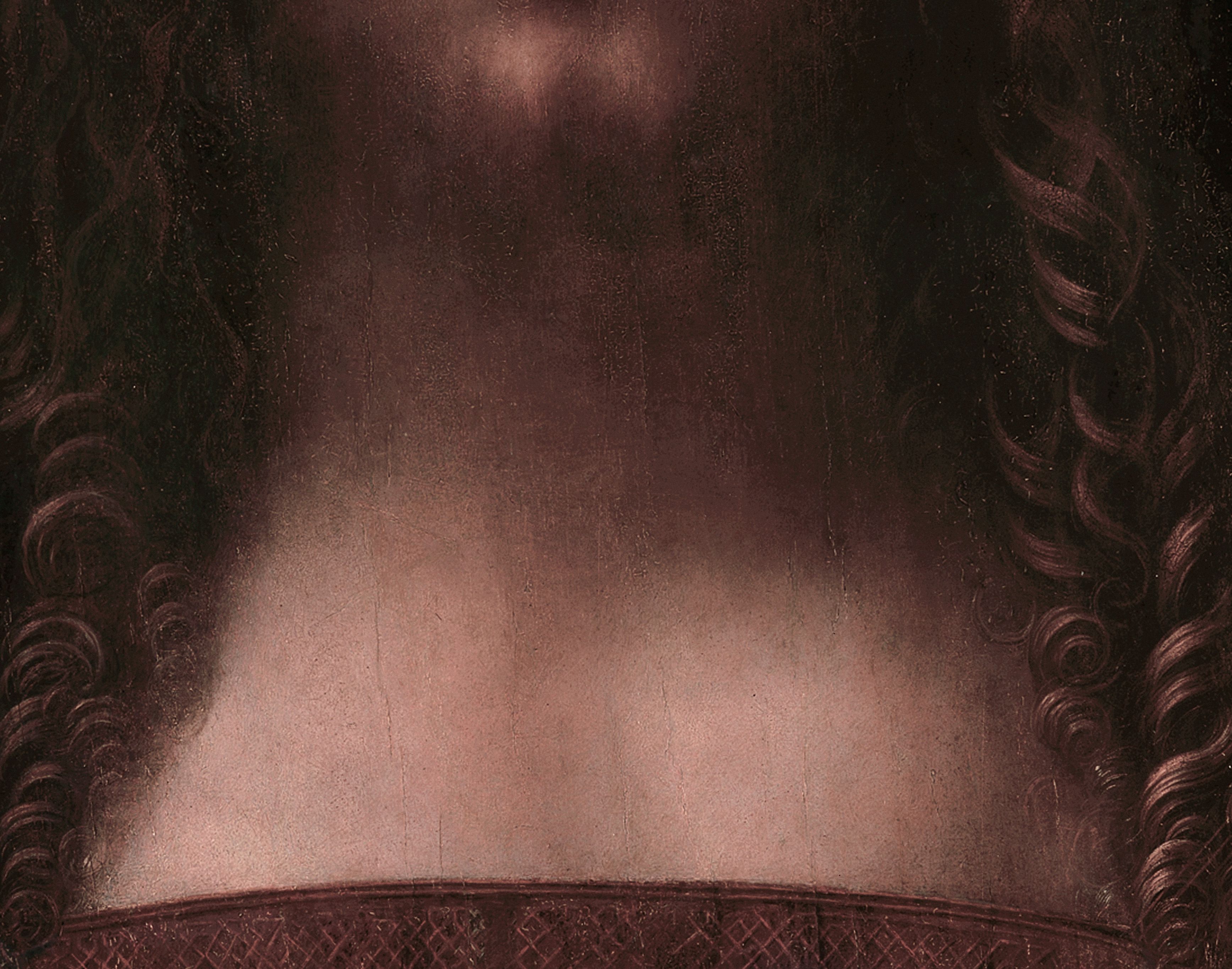
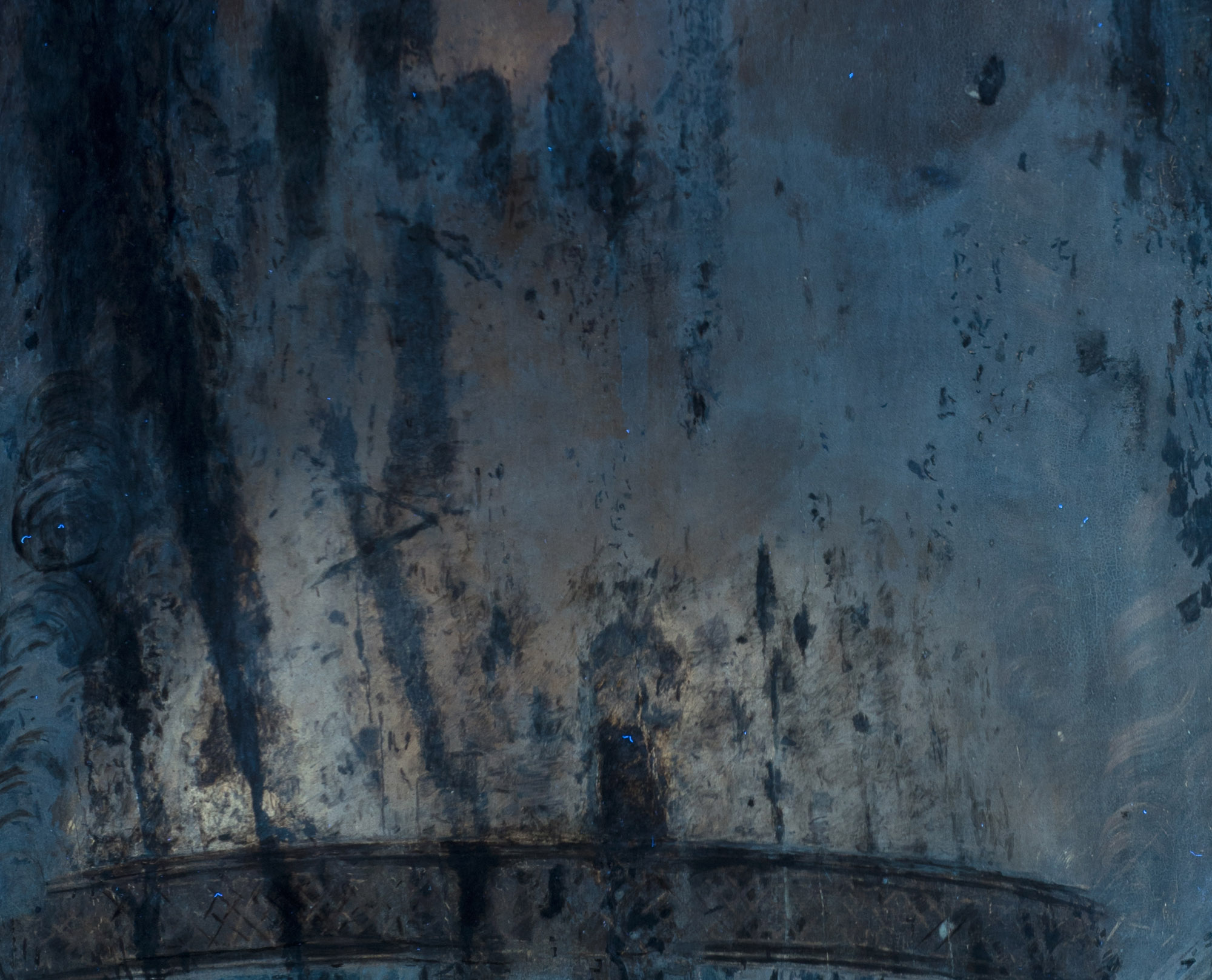
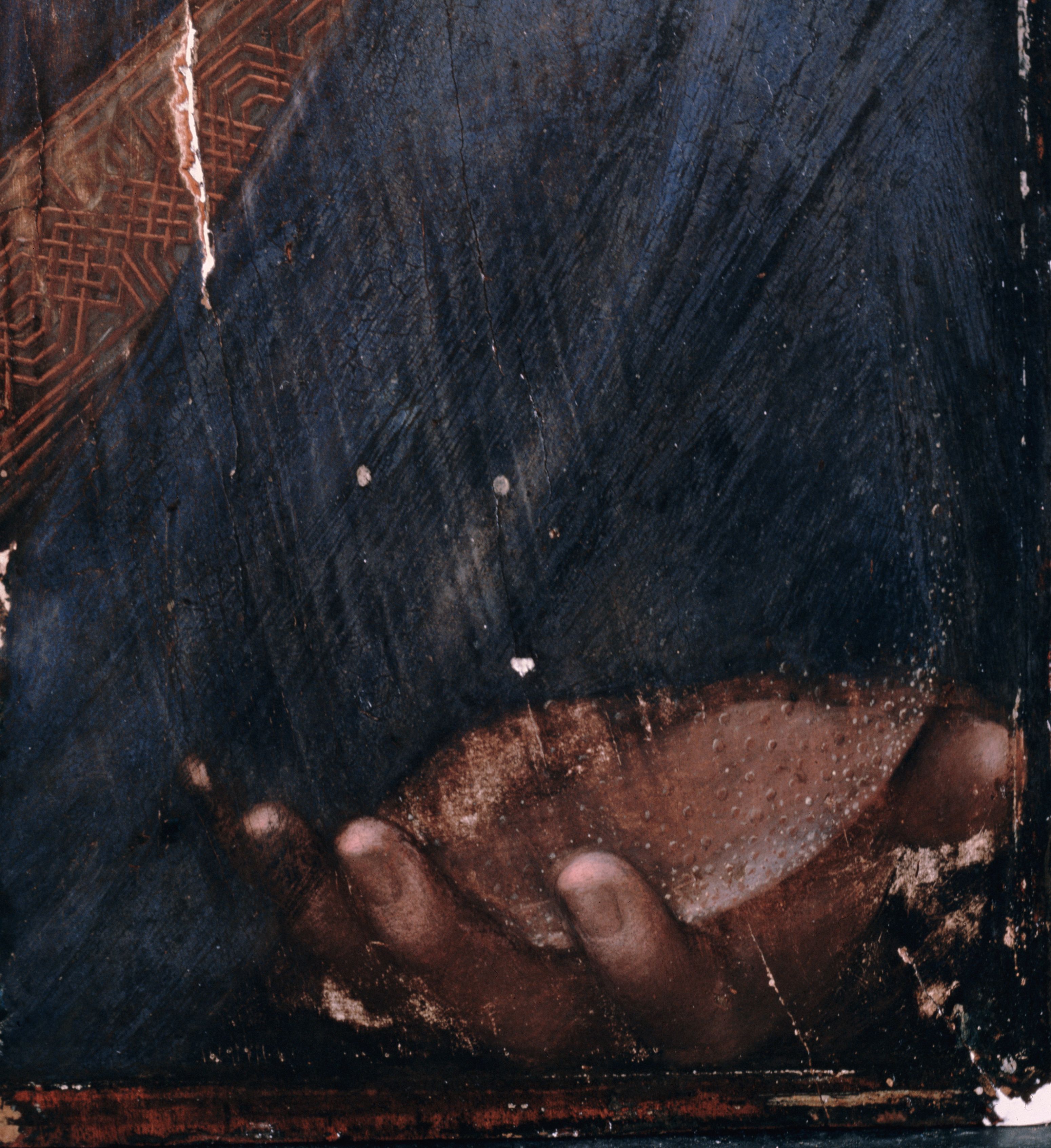
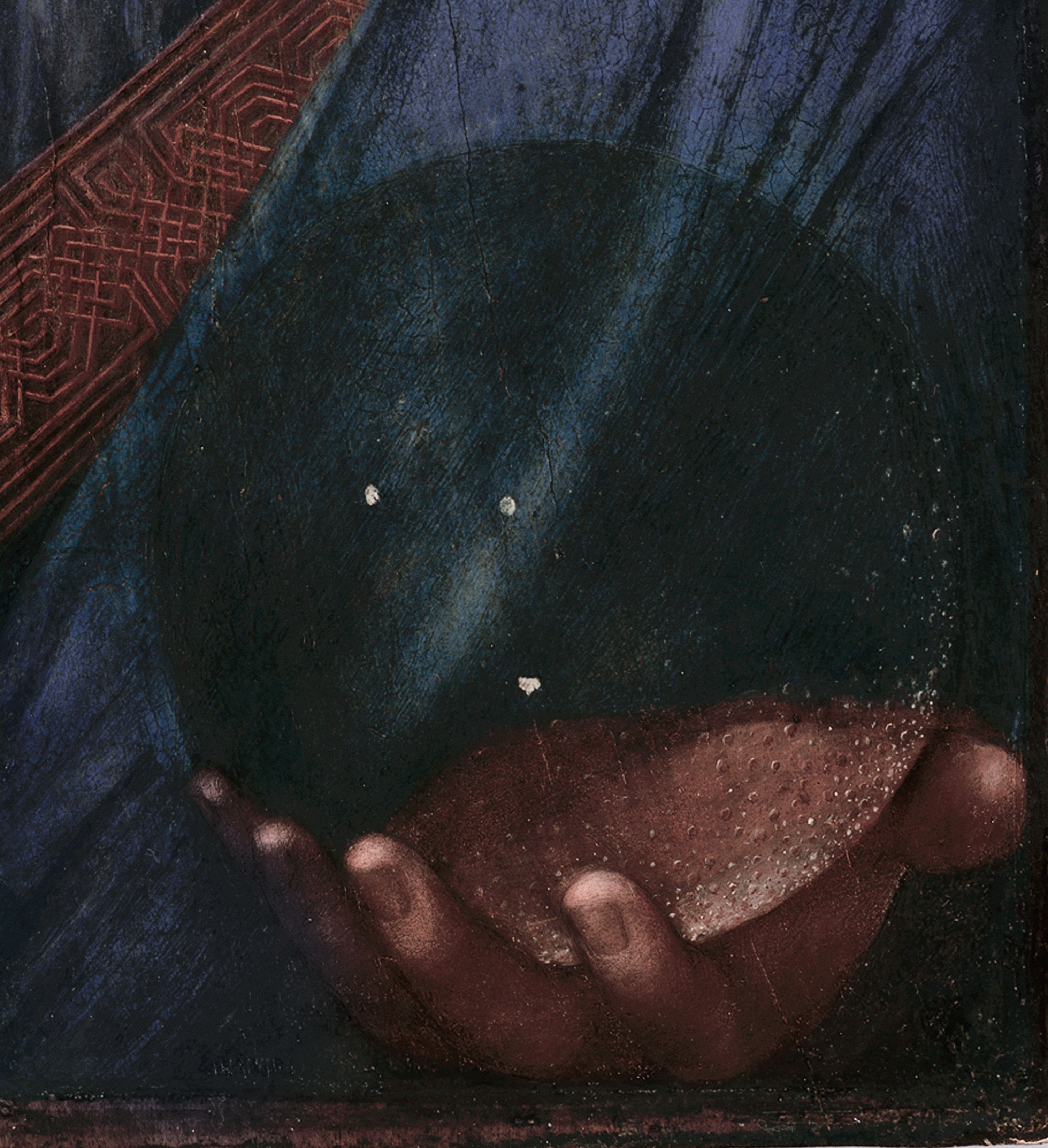
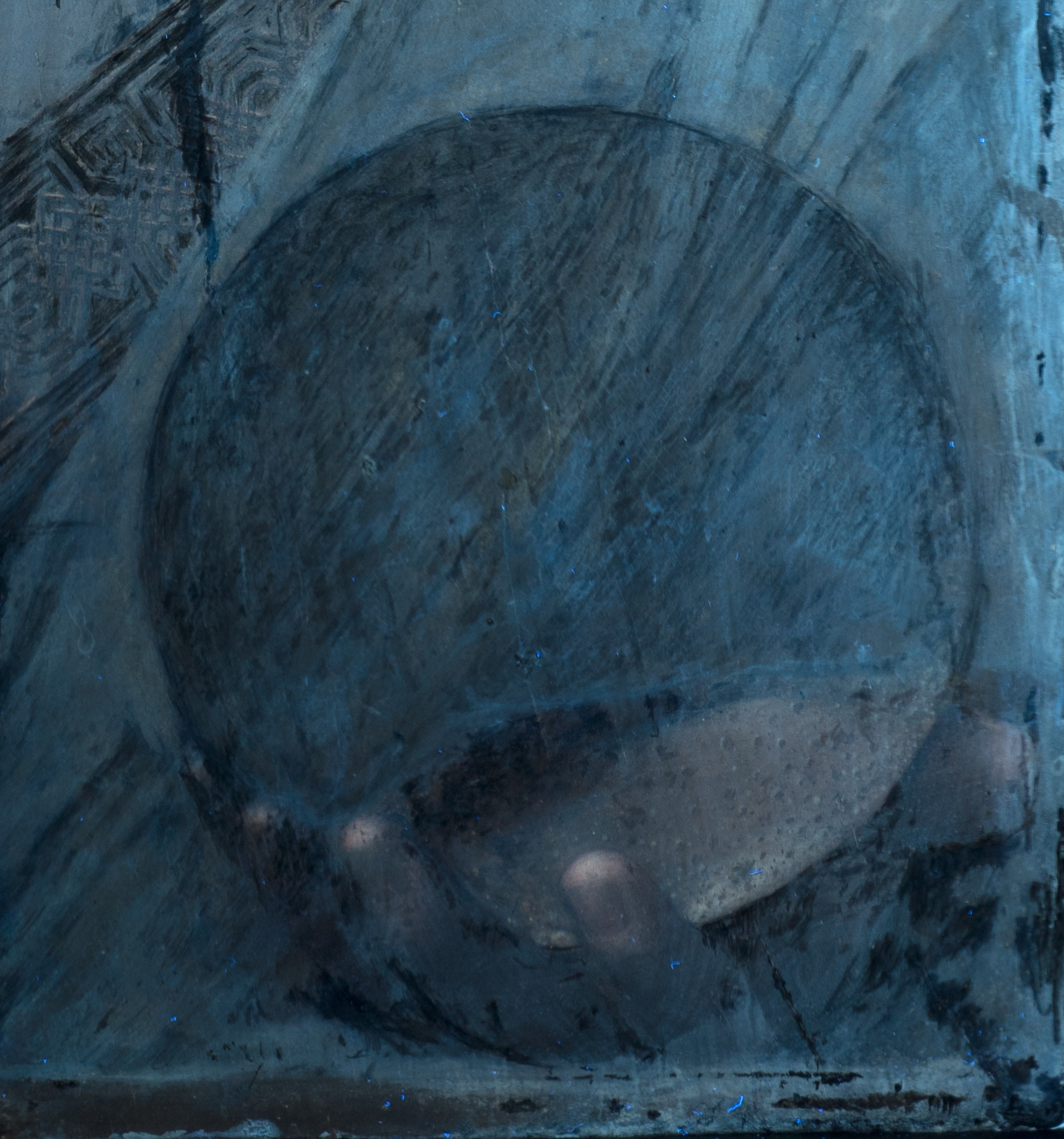
The restoration was not complete when the painting went to London in 2008 and was attributed to Leonardo. (Visible light image, 2008)
In 2010 the painting was returned to me because, not only was the restoration incomplete, but I was dissatisfied with the muddy, modern background, so close in hue and tone to the hair that it locked the head into the same plane as the background, diminishing its plastic values and powerful three dimensionality. As noted elsewhere, the original black background was visible in several places around the contour of the blessing hand the proper left shoulder and resembled Leonardo’s rich, warm blacks, confirmed for me by the several hours I spent studying the Virgin of the Rocks in the conservation studio of the National Gallery in London. After this examination, it was clear that the muddy brown color of the repainted background of the Salvator Mundi was far from Leonardo’s original intent and I suggested to the owners that an attempt to uncover more of the original would be worthwhile. They agreed and I began to remove the overpaint by mechanical means, working under the binocular microscope. The remnants of green verdigris were not original, as I already knew, but the result of an early embellishment of the picture. This was confirmed during the cleaning process:where there were patches of the thick, granular green pigment the beautiful black original background color was perfectly preserved.
Unfortunately, when the verdigris repaint had been had been scraped off, much of the original black background was torn away as well, leaving only patchy remants surrounded by original preparation, modern gesso fills, or the wood itself. It was, however, enough to confirm that the entire background had been originally black. An advantage to removing the overpaint was that the uneven surface had been generously smeared with filling material after it had been scraped and gouged before the application of a uniform brown color so that the repaint was considerably thicker than the exceptionally thin original. With its removal, the background could be retouched so that it was at the same level as the adjacent original. I chose not to photograph the painting with the background stripped because what was missing was only solid black, the chewed up appearance was deeply distracting, and I decided that it was not fair to the painting, nor particularly useful, to record it in that state. This is not the usual practice when documenting restorations and I take full responsibility for that decision. The missing areas were retouched with numerous passes of a particularly finely ground, rich and deeply colored, ivory black pigment, inherited from my husband who recommended that I keep it in reserve since ivory black of that quality could no longer be obtained. A bit of vermilion was added to some of the passes to match the surviving islands of original paint. The retouches were burnished and mechanically distressed so that they resembled, to the extent possibly, old paint. This made a great difference in the way the picture read, allowing the warm brown of the hair to separate from the black background.
For this final phase of the restoration, to be sure that I had was not covering original paint nor imposing my own interpretation on the image, especially in the damaged flesh tones of the head, I referred to a one to one print made from a drum scan of the cleaned state transparency. Closely checking my work, I frequently removed or edited my retouches with a scalpel so that they were as thin as possible and I was sure they did not cover any original paint.
Some pentimenti and areas of abrasion remained visually disturbingly because they interupted the final form, particularly in two imporant passages. Some of the abraded knotwork revealed underlying light underpaint and this background color was glazed to match areas that had not been abraded. A few of the abraded or missing threads of knotwork were bridged. This was done in order to make the spatial relationship of the stole to the passages of blue drapery more coherent. The decision over how to deal with the exposed pentimento of the thumb was problematic. Robert Simon had always been in favor of allowing the pentiment to show. I made various attempts using different strategies to partially suppress the first thumb but found that all were unsatisfactory as the pentiment continued to interfere with the reading of the final thumb and to assert itself as an incomprehensible sixth digit. Dissatisfied with the results of these halfway measures, I was in favor of suppressing it entirely, as it had never been intended to be seen. Finally, Luke Syson weighed in, deciding that it was a pity to sacrifice the beautifully preserved hand to a pentiment, and I masked the thumb with the background color. The negative shape between the thumb and index finger, where the original background color had been scraped away, was also adjusted.
All the retouching was done using double and treble “0” brushes, applied with tiny vertical strokes or thin passes, to avoid covering original paint and inducing misinterpretation. I found that to successfully imitate the original passages of flesh tones, it was imperative to more or less mimic the original technique, layering thin glazes and scumbles over a bright pink opaque underpaint. A variety of media were employed: mainly dry pigments bound with PVA AYAB; water color; minimal use of Maimeri restoration colors in a few of the darkest passages as a final or intermediate glaze. The retouches were locally varnished with AYAB in alcohol, followed by Talens Retouching Varnish. (Polycyclohexanone resin Laropal K-80, 15% w/v in white spirit.) A final (and temporary) varnish consisted of several sprays of Mowilith 20, 5% in ethyl alcohol.
In July 2017, when the painting was sent to New York by the then owner, it came to me at the Conservation Center. Shortly before it went to Christie’s, I was permitted to unframe the painting and to correct a retouch above the lip with which I was never satisfied. In the area of the proper left shoulder the dark underpaint had become visible because the regenerating effect on the degraded lapis lazuli of the solvents used in the cleaning was only temporary. I resaturated the passage locally with AYAB in alcohol and the area again reformed. The surface was given a final brush varnish of 7% mastic resin in triple distilled turpentine stabilized with Tinuvin 292. Some new technical images were made, using the equipment that we had available. While the painting was at Christie’s, I asked if I might ask a specialist to scan the painting with advanced imaging equipment, specifically hyperspectral and macro xrf, but neither the auction house nor the owner gave permission for this. (This takes some time during which the painting would have had to be taken off view and everything had been tightly scheduled. This technology was quite new then and less easy to access than it is now.)
The ultraviolet fluorescence photograph illustrates the exact extent of my retouching and demonstrates that my retouches do not cover any original paint. This can be verified in the overlay of the cleaned state and the UV fluorescence images on this website. |

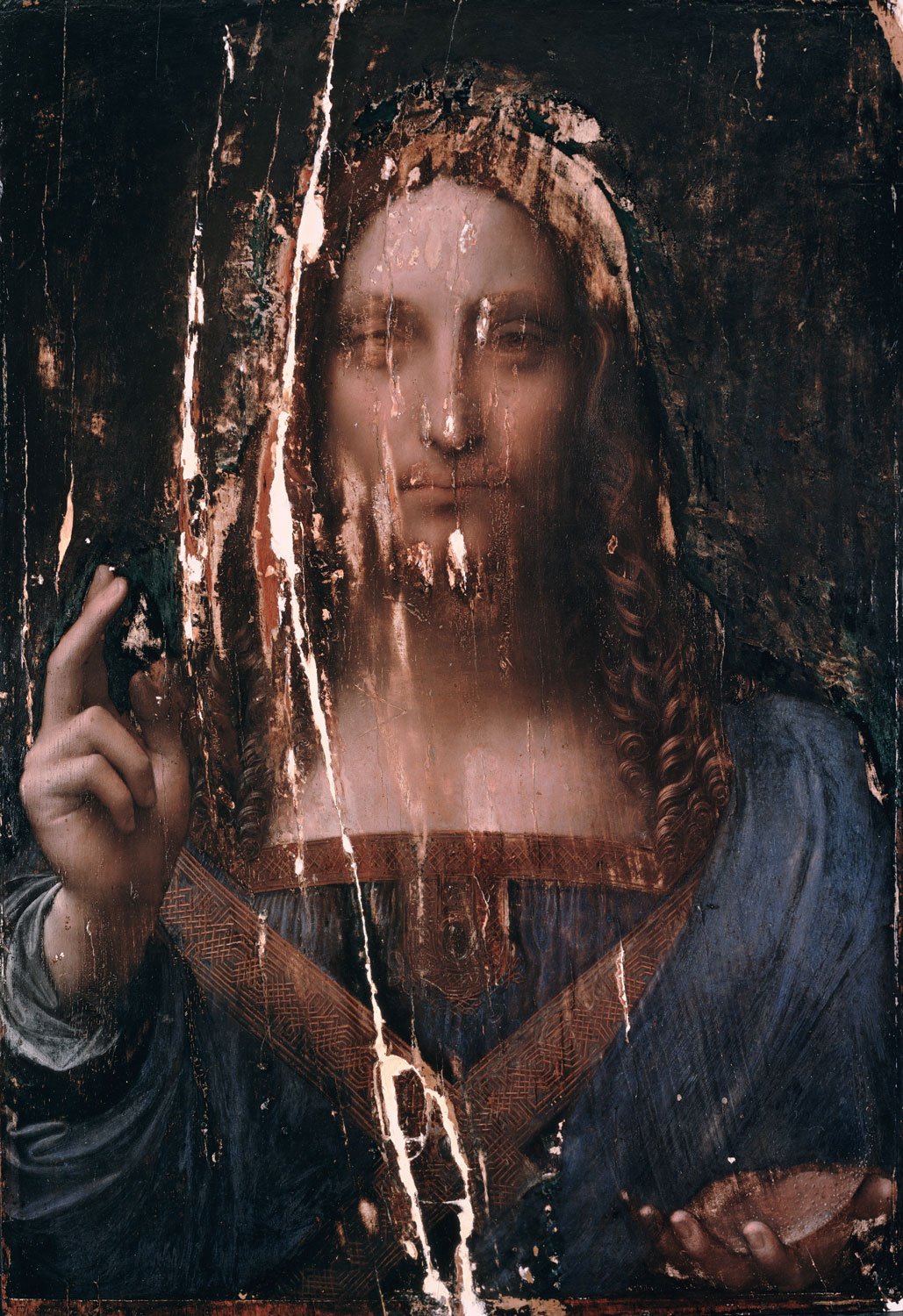
by Shan KuanG, Conservation Center
- Fitzgerald, F. Scott, and Edmund Wilson. 2009. The crack-up: with other miscellaneous pieces, excerpts from note-books and letters by F. Scott Fitzgerald together with letters to Fitzgerald from Gertrude Stein, Edith Wharton, T.S. Eliot, Thomas Wolfe, and John Dos Passos, and essays and poems by Paul Rosenfeld, Glenway Wescott, John Dos Passos, John Peale Bishop, and Edmond Wilson. https://www.overdrive.com/search?q=154D10E1-79F4-4A7E-8E68-1DF8DB0CC27F. location 906
- Bernard Lahire. 2019.This is not just a painting: an inquiry into art, domination, magic and the sacred.